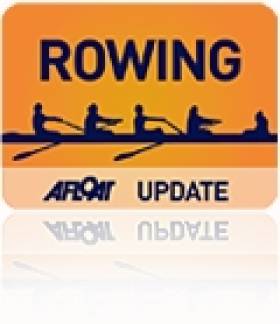Displaying items by tag: Sculling Ladder
Mitchell Fastest at Cork Sculling Ladder Time Trial
#CorkScullingLadder: John Mitchell of Lee Rowing Club was the fastest man at the Cork Sculling Ladder time trial at the Marina today. Dan Buckley of Lee and Eamon Joyce of Cork Boat Club were locked on the same time in a tie for second, just two seconds behind Mitchell. One place further back, three men tied for fourth: Dan Begley of Shandon, David Synnott of Lee and Colm Hennessey of Shandon. Marie O’Neill of Cork BC, who won last year, was also the fastest woman this time.
Cork Sculling Ladder TT, Marina, Cork (Selected Results) Men: 1 J Mitchell (Lee RC) 7:08, 2= D Buckley (Lee), E Joyce (Cork BC) 7:10; 4= D Begley (Shandon), D Synnott (Lee), C Hennessey (Shandon) 7:20. Women: M O’Neill (Cork BC) 7:53.






























































